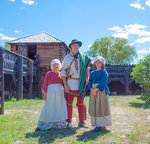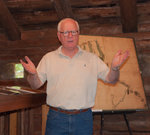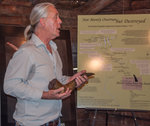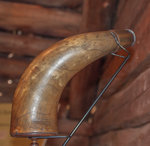, 0°
Wind: mph
In the interest of full disclosure, my knowledge of American history is sketchy at best. I don’t know what I was doing during those particular hours in school, but if I had to guess, I was …
Stay informed about your community and support local independent journalism.
Subscribe to The River Reporter today. click here
This item is available in full to subscribers.
Please log in to continueNeed an account?
|




Related
In the interest of full disclosure, my knowledge of American history is sketchy at best. I don’t know what I was doing during those particular hours in school, but if I had to guess, I was probably clowning around. Believe it or not, I was often caught trying to make the girls laugh and getting into trouble with my teachers—something I excelled at, according to Mom.
Nowadays, the adult Jonathan is more interested than the class clown was in learning about how our country was formed and how the indigenous people were displaced, uprooted and ultimately eradicated in what can only be described (IMHO) as genocide. The Upper Delaware River region is steeped in history and fortunately, I have Sullivan County historian John Conway, founding member of the Delaware Company, to learn from, now that I’ve stopped making funny faces in school.
I happened to stumble across one of Conway’s “Sullivan Retrospect” (find it on Facebook) essays last week, which piqued my interest enough to toss Dharma in the truck and zip over to the Fort Delaware Museum of Colonial History in Narrowsburg, NY. Conway’s essay, titled “Guiding General Sullivan,” was intriguing, and I’m including an excerpt here.
“On August 11, 1779, at the height of America’s war for independence, General John Sullivan arrived at Tioga Point in upstate New York with a large force of men, and began construction of what would become known as Fort Sullivan. The men had marched some 80 miles to get to Tioga, where they expected to rendezvous with a brigade under the command of General James Clinton. The marching army, including 1,200 pack horses, had stretched for six miles long along a narrow old Indian trail, with 700 beef cattle bringing up the rear. Once they reached the Susquehanna, they met up with their artillery and supplies, which had been loaded into 214 boats and poled upstream.
“Once Clinton and his men arrived at Fort Sullivan about two weeks later, the force, now comprising nearly 5,000 men under Sullivan’s overall command, embarked on an expedition to drive the Iroquois and the British Tories they had been sheltering out of New York, destroying everything in their path. The so-called Sullivan-Clinton Campaign resulted from direct orders from George Washington himself.”
The county historian went on to inform me that “the lack of accurate maps made it essential that Sullivan be led by expert guides with detailed knowledge of the country the army would traverse, and Lt. John Jenkins of the 24th Connecticut Regiment was Sullivan’s guide throughout the campaign. Lt. Jenkins kept a rather unique record of the expedition, etching the route of the journey and some of the highlights of the battles fought onto the surface of a powder horn he carried.”
The powder horn has recently come back into the possession of Lt. Jenkins’ family, and guest speaker Richard Jenkins, one of the lieutenant’s descendants, was on hand at the museum last Saturday to display the artifact and tell the fascinating story of its significance and provenance. In addition, reenactors from the 24th Connecticut were encamped at the fort all weekend.
I arrived early enough to tour the fort, snap some pics and chat with a few people, including Delaware Company executive director Debra Conway. I also talked to Kelly Agar, the Town of Tusten youth treasurer, who shared some thoughts on 10-year-old daughter Maddy and her cousin Zoey, two of Fort Delaware’s newest reenactors.
“Today was the first day that [they] volunteered all by themselves.” Kelly said. “It makes my heart soar. Anyone who knows me knows that 18th-century living history was once a huge part of my life, and it’s a passion. The fort will always be near and dear to my heart. I’m so happy they want to be involved.
“The fort is in amazing hands now with the Delaware Company. I look forward to working with them,” she continued, “as a Tusten Youth partner and through 18th-century living history.”
Fort Delaware is an depiction of the life of the Delaware Company pioneers who settled in the Upper Delaware valley in 1754. A tour of the facilities includes demonstrations of early settlers’ lifestyles and craft-making. A gift shop, vending area and picnicking facilities are located on the grounds.
The museum is located at 6615 Rte. 97 in Narrowsburg, within the borders of the National Park Service Upper Delaware Scenic and Recreational River corridor. It’s owned by Sullivan County and operated by the nonprofit history education group, the Delaware Company.
For more info, go to www.thedelawarecompany.org, or email jconway52@hotmail.com.

Comments
No comments on this item Please log in to comment by clicking here